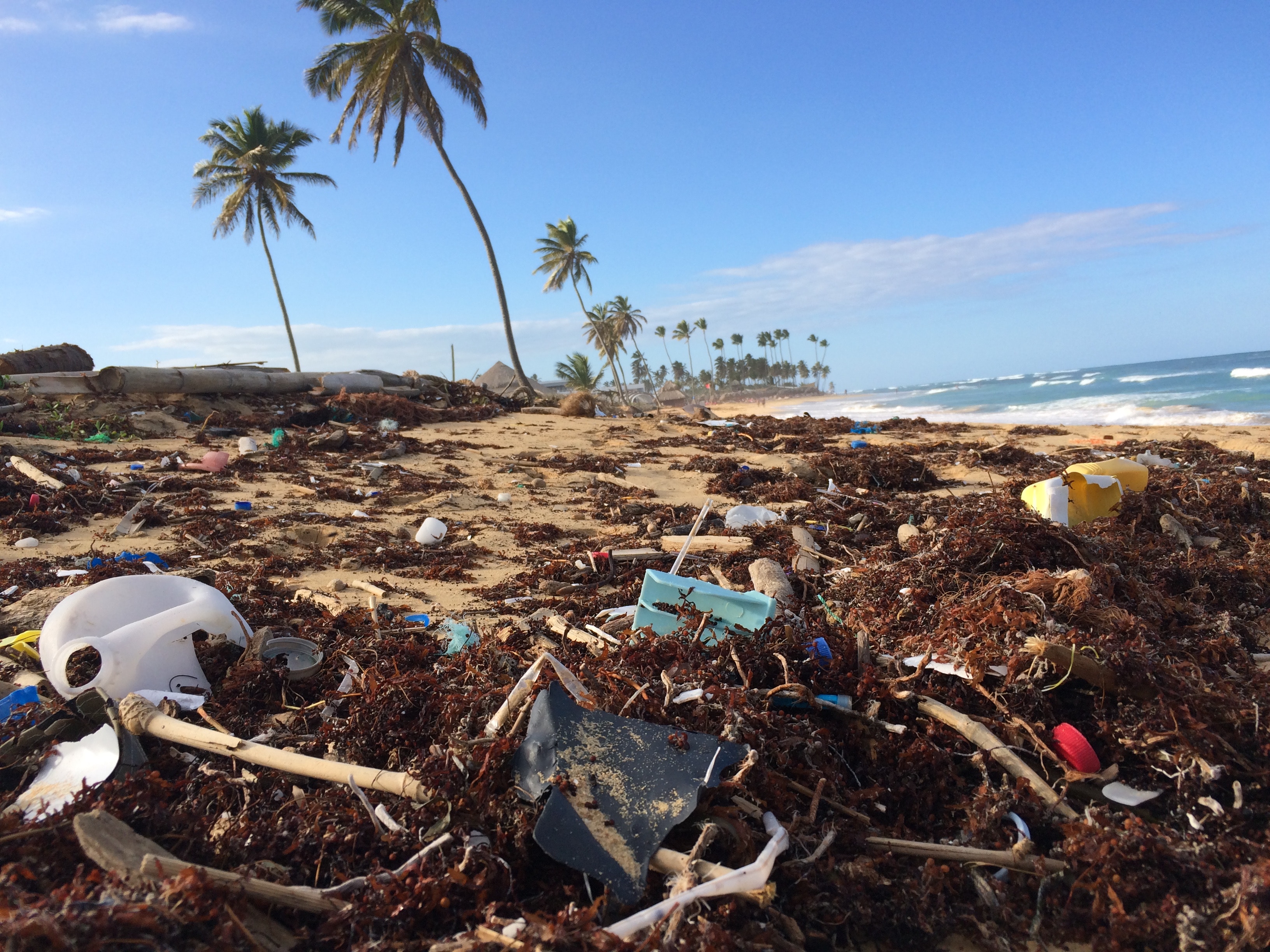Inhabiting 34 islands and atolls scattered across approximately 470,000 km2 in the Pacific Ocean, with distances ranging from dozens to hundreds of kilometers between them, the Marshallese people have demonstrated exceptional navigational skills for centuries.
The ancient navigation techniques of the Marshall Islands were guided by stick charts—traditional artifacts crafted from coconut and palm strips, bent and tied together to create a complex lattice structure. At first glance, these charts may seem unintelligible to the modern eye, yet they hold a wealth of information about ocean currents, wave and wind patterns, and the marked locations of atolls and islands, providing potential navigation routes.
Stick charts were actually quite delicate objects and, therefore, not suitable to be transported during journeys at sea. The Marshallese people would then navigate based on information memorized through the stick charts, but then, once at sea, strongly relied on a more experiential way of knowing the sea. Marshallese navigators would lie prone in their canoes to sense the waves and ocean swells: Relying solely on the feeling of the ocean, they could precisely read the sea by feel and sight, determining their direction, the nearest land, and the desired path.
The climate crisis has profoundly troubled the waters surrounding the Marshall Islands, placing it, like many other ocean island nations, at the forefront of the impacts of the climate crisis. Recognizing this, the Marshallese people are integrating their traditional knowledge with the best available science-based data and guidance to navigate the challenges.
Much like the traditional stick charts, the new National Adaptation Plan for climate unveiled by the island nation at the close of COP28 in Dubai sets crucial benchmarks and delineates the roadmap from the current period until 2150. This marks the point when the nation is anticipated to face complete submersion by the ocean unless the current climate route is not reversed.
Situated in the heart of the Pacific Ocean, midway between Hawaii, Japan, and Australia, the Republic of the Marshall Islands comprises 29 atolls and five individual islands. The nation’s primary industries are subsistence agriculture, fishing, and tourism.
Characterized by low land elevations averaging two meters above sea level, Marshall Islands face heightened vulnerability to climate change impacts, particularly sea-level rise. This vulnerability poses significant implications for the population in the whole country, impacting on the economy, increasing unemployment rates, and population relocations or migrations to cope with the crisis.
The RMI’s National Adaptation Plan (NAP) assesses the main climate impacts, risks, and vulnerabilities on all aspects of life in the republic, including the economic sector, social issues, and natural resources. This assessment is of a holistic type, based on both “science-based measures as well as the lived experiences of climate impacts by people and communities, […] equally important to maximize meaningful adaptation opportunities”.
For instance, the NAP includes a survey conducted among nearly 900 people from different atolls and islands of the Republic. The findings underscore that the most commonly observed manifestations of climate change by communities are rising sea levels and warmer temperatures, followed by challenges related to drought and erratic rainfall. Moreover, the most frequently cited impacts of climate change are felt in livelihoods, with issues like increasing heat and soil salinization affecting productive activities and agriculture. Additional identified vulnerabilities encompass concerns about food and water security, effects on critical infrastructure (such as power supply, transportation, and communication), and implications for the health system.
Moreover, human rights organizations have expressed serious concerns, corroborated by community impressions surveys, regarding the escalating risks of climate change’s impacts on social life, particularly for women and vulnerable populations. In particular, climate change is disrupting the economy, driving up unemployment rates, and forcing relocations to higher ground or emigration to other countries.
According to the UNDP Climate Change Adaptation Portal, “the capacity of the Marshall Islands to adapt to the effects of climate and sea-level change will largely be determined by its ability to address ongoing environmental, social and economic problems.” Therefore, adaptation to climate change should involve targeted activities aimed at specific sectors that are experiencing the impacts of climate change, general policies and actions by the government to address social factors that contribute to vulnerability to climate change, and actions to enhance the capacity of the Marshall Islands to implement effective adaptation measures.
Negotiating to not disappear
The Republic of the Marshall Islands played a significant role at COP28, passionately advocating for ambitious climate action to protect its communities. Engaging in high-level dialogues and negotiations, the Marshall Islands’ delegation championed the priorities of small island developing states (SIDS) and vulnerable communities.
“Our ancestors faced many challenges. Despite all of these, the biggest challenge that has yet confronted us is climate change,” said Hon. John Silk, Minister of Natural Resources and Commerce of the Republic of the Marshall Islands during his National Statement at COP28. “We will not go silently to our watery graves. Therefore, we cannot and will not accept an outcome from this COP that does not set us on a course for a future that stays within the 1.5 degrees Celsius temperature limit and leads to a more resilient world.”
At COP28, the Marshall Islands emphasized the urgency of addressing climate change and outlined key priorities for protecting their vulnerable communities. First, they urged developed countries to phase out fossil fuels rapidly to prevent further warming and called for a dedicated funding mechanism to address the loss and damage caused by climate change.
During discussions at COP28, Marshall Islands climate envoy Tina Stege, who played a pivotal role in advocating for the country’s priorities, delved into the practical implications of achieving the 1.5°C target. She emphasized the stocktake as “the tool we have” to “correct our course […] and address the root cause of the problem, which is the burning of fossil fuels”, as quoted by Carbon Brief.
Despite their negligible contribution to global greenhouse gas emissions, the Pacific Islands, including the Marshall Islands, have emerged as resolute champions of climate action. Despite being acutely vulnerable to the escalating impacts of climate change, these island nations have demonstrated remarkable resilience and leadership in the face of this global challenge.
At COP28, to enhance resilience and adapt to the impacts of climate change, the RMI delegation advocated for investments in climate-resilient infrastructure and sustainable practices, such as implementing nature-based solutions, and strengthening infrastructure, education, and healthcare systems to make people more resilient.
Additionally, the Marshall Islands emphasized the importance of ocean protection, including safeguarding marine ecosystems, reducing pollution, and combating overfishing. They have spearheaded the call for a greenhouse gas (GHG) levy on maritime shipping, a crucial measure to curb emissions and support the most vulnerable communities affected by climate change.
The National Adaptation Pathway for Survival, as it is referred to in the NAP document, aims to guide adaptation efforts through a long-term sequence of actions, each activated by shifts in environmental or social conditions, such as sea-level rise or migration. These trigger points serve as signals for the need to adjust adaptation measures, ensuring timely and effective responses to evolving circumstances and a dynamic approach that continuously adapts to changing conditions.
“Our NAP development process has centered both scientific insights and traditional knowledge in an inclusive, gender-sensitive, and transparent manner, engaging a broad spectrum of stakeholders, including international partners, to ensure a holistic approach. Our culture of self- determination and resilience in the face of adversity is reflected in our plan for our survival.”
From the National Adaptation Plan
A pathway for survival
The Marshall Islands’ Pathway for Survival details a comprehensive plan for climate adaptation over the long term (2024-2150), on the basis of five key principles: effectiveness, efficiency, equity, enablement, and sustainability. It is divided into key periods, each with decision points based on ongoing climate data updates, financial assessments, and community engagement.
In the near term period (2024-2040), the NAP focuses on preparing institutional frameworks, prioritizing immediate, low-risk adaptation actions, and ensuring early measures that safeguard vulnerable communities. The mid-century period (2040-2070) will then require re-evaluating existing protective measures and making decisions about planned relocations and infrastructure in designated community hubs. Between 2070-2100, an expected sea-level rise of 0.5 meters on average will trigger habitation responses and a comprehensive review of existing strategies.
Beyond 2070, two scenarios are possible: in the first scenario, sea-level rise remains manageable, and the government may continue to invest in protective structures; in the opposite scenario, the focus would be on planned relocation measures or seeking alternative land.
Finally, the year 2150 is taken as a critical juncture, with an expected 2-meter sea-level rise on average across the Republic’s islands and atolls. At this point, decisions will need to be made about fortifying current communities or initiating relocations.
Atoll-specific strategies will also be employed, with urban centers focusing on coastal barriers fortification followed by planned relocation, semi-urban atolls benefiting from both ‘hard’ and ‘soft’ protective infrastructure, and rural atolls initially utilizing nature-based and low-cost solutions.
“[…] we have had to face the reality that the pathways that we have ahead of us also bring loss. In our NAP, we say that by 2040 we will need to be deciding which atolls can no longer be protected. ‘Planned relocation’ means tearing people from their ancestral islands that they depend on, that their culture is based on; that holds the bones of their forefathers, and legends passed on through generations”
RMI Minister John Silk, quoted by SPREP
The implementation of the adaptation strategies for the survival of life as we know it on the Marshall Islands naturally comes at a financial cost, and it is substantial.
The NAP estimates an investment ranging from USD 250 million for protecting specific areas to over USD 1 billion for comprehensive defense of urban centers against a 0.5m sea-level rise.
The endeavor to raise and shield areas against a 2m sea-level rise, projected to be necessary by 2150, could surpass USD 5 billion to accommodate the current population of the RMI. According to the NAP, costs for semi-urban and intermediate centers vary, depending on the extent of required adaptation and available investments, ranging from USD 250 million to USD 2 billion for protection against 0.5m and 2m sea-level rise, respectively.
“We cannot face this challenge without a new approach to climate finance. An approach that values accountability, and keeping promises like the $100 billion and the doubling of adaptation finance,” said Silk at COP28. “That recognizes the need to think about every way that we can bring money towards addressing this crisis.”
The Marshall Islands’ participation in COP28 was a testament to its leadership and determination to address the climate crisis. The country’s strong advocacy for ambitious action and its commitment to resilience and adaptation set a positive example for other SIDS and vulnerable communities. The country’s voice continues to be crucial in the global climate negotiations, and its leadership is inspiring other vulnerable nations to demand ambitious action. “If you protect the most vulnerable, you protect the world. We are here in Dubai to fight for our island homes and for our people’s right to determine our nation’s future. We ask you all to stand with us,” said Silk.
In the preface of the NAP, Marshall Islands President David Kabua boldly asserts that his nation will continue to be a beacon of hope in the fight against climate change, pushing the international community to shoulder its responsibilities and keep global warming below 1.5°C. He poignantly highlights the disproportionate impact of climate change on small island nations like his own, calling for accountability from those who have contributed most to the crisis.
“[…] we will remind them of their responsibility to address the loss and damage inflicted here in the Marshall Islands and across the planet as a result of the ongoing failure to end their pollution. Here at home, this National Adaptation Plan will play the role of our traditional stick charts, helping us to chart our course, guided by the swells and the stars. We cannot foresee every wave that may strike us, every gust of wind that may blow us off course. We must be prepared for the worst and hope for the best.”
David Kabua, President of the Republic of the Marshall Islands
Image by Christopher Johnson from Tokyo, Japan – PICT0685, CC BY-SA 2.0, from Wikimedia Commons.






